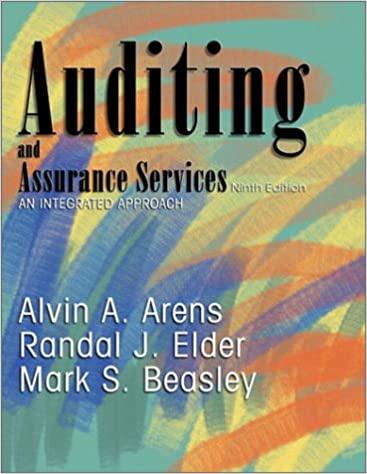



Instructions: Complete the following questions based on the instructions provided. Suppose you have been given responsibility for developing the six-month aggregate production plan at Fizzy Galore, a manufacturer of soft drinks. Your company makes three types of soft drinks: regular, diet, and super-caffeinated. Fortunately, all three types are made using the same production process, and the costs related to switching between the three types are so minimal that they can be ignored. Thus, you can treat your problem as an aggregate planning exercise where the planning unit is cases of soft drinks, regardless of what types of drinks they are. The S&OP team has developed a forecast of demand for the first six months of the year (provided). Cost data is also provided below. The material cost of a case of soda is the same regardless of whether it is produced in regular time or overtime. Also assume Fizzy Galore always plans to hold 5000 cases of safety stock to meet unanticipated demand. January beginning inventory on hand is safety stock. Current Workforce Average monthly worker output Inventory holding cost Regular wage rate Regular production hours / month Overtime wage rate Hiring cost Subcontracting cost Layoff cost Beginning inventory (safety stock) | 8 workers 4000 cases per month $0.30 per case per month $20.00 per hour 160 hours $30.00 per hour $1000 per worker $1.15 per case $1500 per worker 5000 You have been asked to evaluate the cost of a level plan and a chase plan in order to make a recommendation. Hint: Before comparing alternate aggregate production plans, it is necessary to convert some of the given data into common values for planning purposes. Aggregate Production Plan - Level Month Jan. Feb. March April May June June Total Demand 24000 32000 32000 48000 60000 44000 240000 Production Overtime/Subcontract Ending Inventory Stockouts Labor (8 beginning) - Workers - New Hires - Layoffs Inventory carrying costs: Stockout cost: OT/Sub costs Hiring costs: Layoff costs: Production Cost Total costs: Aggregate Production Plan Chase (Adjust Workforce Size) Jan Feb March April May Month June Total Demand 24000 32000 32000 48000 60000 44000 240000 Production Overtime/Subcontract Ending Inventory Stockouts Labor (8 beginning) - Workers - New Hires - Layoffs Inventory carrying costs: Stockout cost: OT/Sub costs Hiring costs: Layoff costs: Production Cost Total costs: Aggregate Production Plan - Chase (Overtime / Subcontract) Month Jan. Feb. March April May June Total Demand 24000 32000 32000 48000 60000 44000 240000 Production Overtime/Subcontract Ending Inventory Stockouts Labor (8 beginning) - Workers - New Hires - Layoffs Overtime Sub-contracting Inventory carrying costs: Inventory carrying costs: Stockout cost: Stockout cost: OT/Sub costs OT/Sub costs Hiring costs: Hiring costs: Layoff costs: Layoff costs: Production Cost Production Cost Total costs: Total costs: Instructions: Complete the following questions based on the instructions provided. Suppose you have been given responsibility for developing the six-month aggregate production plan at Fizzy Galore, a manufacturer of soft drinks. Your company makes three types of soft drinks: regular, diet, and super-caffeinated. Fortunately, all three types are made using the same production process, and the costs related to switching between the three types are so minimal that they can be ignored. Thus, you can treat your problem as an aggregate planning exercise where the planning unit is cases of soft drinks, regardless of what types of drinks they are. The S&OP team has developed a forecast of demand for the first six months of the year (provided). Cost data is also provided below. The material cost of a case of soda is the same regardless of whether it is produced in regular time or overtime. Also assume Fizzy Galore always plans to hold 5000 cases of safety stock to meet unanticipated demand. January beginning inventory on hand is safety stock. Current Workforce Average monthly worker output Inventory holding cost Regular wage rate Regular production hours / month Overtime wage rate Hiring cost Subcontracting cost Layoff cost Beginning inventory (safety stock) | 8 workers 4000 cases per month $0.30 per case per month $20.00 per hour 160 hours $30.00 per hour $1000 per worker $1.15 per case $1500 per worker 5000 You have been asked to evaluate the cost of a level plan and a chase plan in order to make a recommendation. Hint: Before comparing alternate aggregate production plans, it is necessary to convert some of the given data into common values for planning purposes. Aggregate Production Plan - Level Month Jan. Feb. March April May June June Total Demand 24000 32000 32000 48000 60000 44000 240000 Production Overtime/Subcontract Ending Inventory Stockouts Labor (8 beginning) - Workers - New Hires - Layoffs Inventory carrying costs: Stockout cost: OT/Sub costs Hiring costs: Layoff costs: Production Cost Total costs: Aggregate Production Plan Chase (Adjust Workforce Size) Jan Feb March April May Month June Total Demand 24000 32000 32000 48000 60000 44000 240000 Production Overtime/Subcontract Ending Inventory Stockouts Labor (8 beginning) - Workers - New Hires - Layoffs Inventory carrying costs: Stockout cost: OT/Sub costs Hiring costs: Layoff costs: Production Cost Total costs: Aggregate Production Plan - Chase (Overtime / Subcontract) Month Jan. Feb. March April May June Total Demand 24000 32000 32000 48000 60000 44000 240000 Production Overtime/Subcontract Ending Inventory Stockouts Labor (8 beginning) - Workers - New Hires - Layoffs Overtime Sub-contracting Inventory carrying costs: Inventory carrying costs: Stockout cost: Stockout cost: OT/Sub costs OT/Sub costs Hiring costs: Hiring costs: Layoff costs: Layoff costs: Production Cost Production Cost Total costs: Total costs










